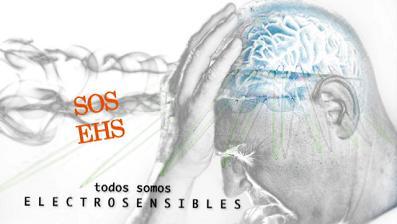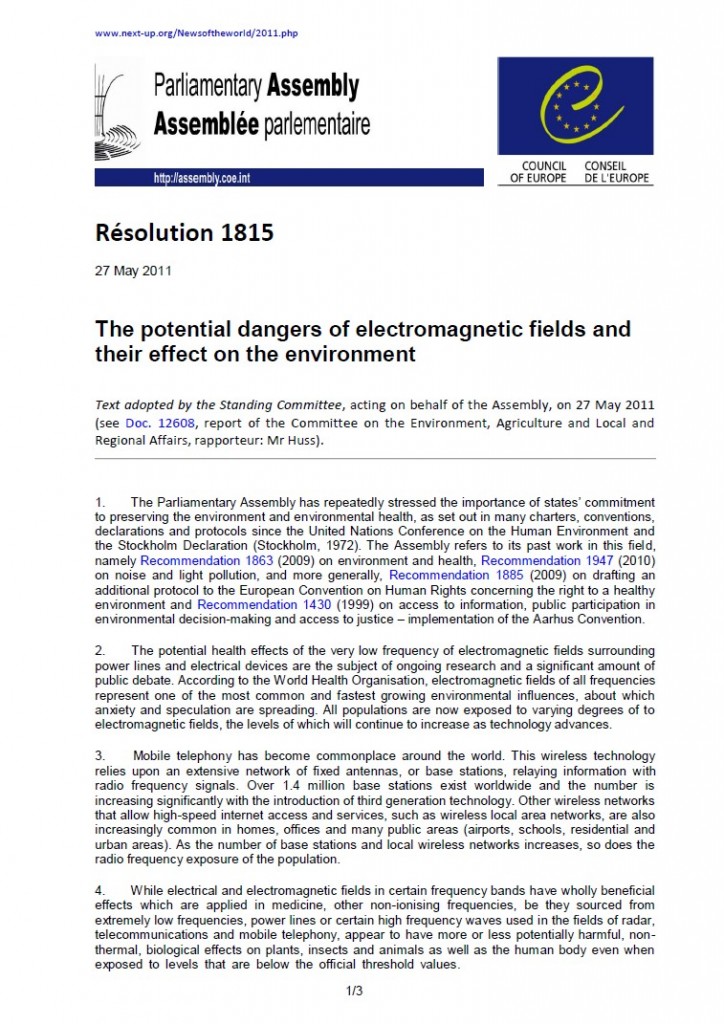Portada del sitio > Electrosensibilidad > Metabolic and Genetic Screening of Electromagnetic Hypersensitive Subjects (...)
Mediators of Inflammation Volume 2014, Article ID 924184

Metabolic and Genetic Screening of Electromagnetic Hypersensitive Subjects as a Feasible Tool for Diagnostics and Intervention
Lunes 19 de mayo de 2014 · 2597 lecturas
Clinical Study
Metabolic and Genetic Screening of
Electromagnetic Hypersensitive Subjects as a Feasible
Tool for Diagnostics and Intervention
Chiara De Luca,1,2 Jeffrey Chung Sheun Thai,3 Desanka Raskovic,4 Eleonora Cesareo,4
Daniela Caccamo,5 Arseny Trukhanov,2 and Liudmila Korkina1,2
1 Centre of Innovative Biotechnological Investigations (Cibi-Nanolab), Novoslobodskaya Street 36/1, Moscow 127055, Russia
2Active Longevity Clinic “Institut Krasoty na Arbate”, 8 Maly Nikolopeskovsky lane, Moscow 119002, Russia
3Natural Health Farm, 39 Jln PengacaraU1/48, Seksyen U1, Temasya Industrial Park, 40150 Shah Alam, Selangor, Malaysia
42nd DermatologyDivision, Dermatology Institute (IDI IRCCS), Via Monti di Creta 104, 00167 Rome, Italy
5Department of Biomedical Sciences and Morpho-Functional Imaging, Polyclinic University of Messina, 98125 Messina, Italy
Correspondence should be addressed to Chiara De Luca; deluca@cibi-nanolab.com
Received 28 November 2013; Accepted 26 February 2014; Published 9 April 2014
Academic Editor: Beatriz De las Heras
Copyright � 2014 Chiara De Luca et al.This is an open access article distributed under the Creative Commons Attribution License,
which permits unrestricted use, distribution, and reproduction in any medium, provided the original work is properly cited.
Growing numbers of “electromagnetic hypersensitive” (EHS) people worldwide self-report severely disabling, multiorgan, nonspecific
symptoms when exposed to low-dose electromagnetic radiations, often associated with symptoms of multiple chemical
sensitivity (MCS) and/or other environmental “sensitivity-related illnesses” (SRI). This cluster of chronic inflammatory disorders
still lacks validated pathogenetic mechanism, diagnostic biomarkers, and management guidelines. We hypothesized that SRI, not
being merely psychogenic, may share organic determinants of impaired detoxification of common physic-chemical stressors.
Based on our previous MCS studies, we tested a panel of 12 metabolic blood redox-related parameters and of selected drugmetabolizing-
enzyme gene polymorphisms, on 153 EHS, 147 MCS, and 132 control Italians, confirming MCS altered (�� < 0.05–
0.0001) glutathione-(GSH), GSH-peroxidase/S-transferase, and catalase erythrocyte activities. We first described comparable—
though milder—metabolic pro-oxidant/proinflammatory alterations in EHS with distinctively increased plasma coenzyme-Q10
oxidation ratio. Severe depletion of erythrocyte membrane polyunsaturated fatty acids with increased ��6/��3 ratio was confirmed
in MCS, but not in EHS. We also identified significantly (�� = 0.003) altered distribution-versus-control of the CYP2C19∗1/∗2
SNP variants in EHS, and a 9.7-fold increased risk (OR: 95% C.I. = 1.3–74.5) of developing EHS for the haplotype (null)GSTT1
+ (null)GSTM1 variants. Altogether, results on MCS and EHS strengthen our proposal to adopt this blood metabolic/genetic
biomarkers’ panel as suitable diagnostic tool for SRI.
Ver el trabajo original completo en pdf







